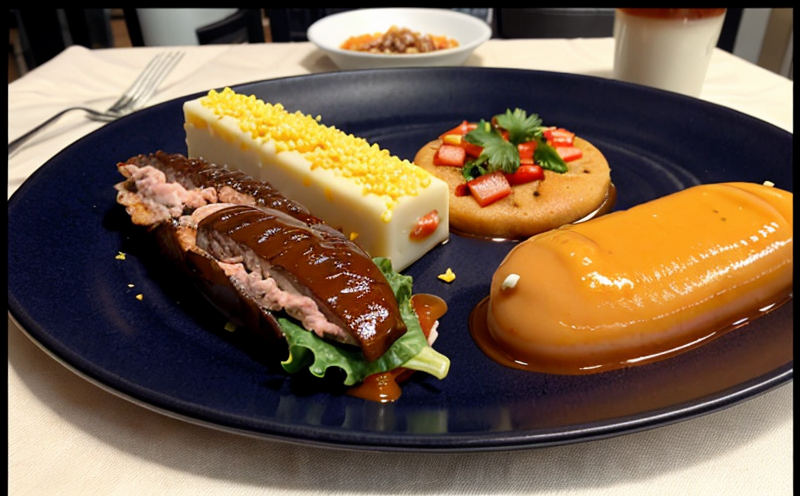EU 10/2011 Testing for Primary Aromatic Amines
In the European Union (EU), ensuring that food contact materials are safe and do not migrate harmful substances into our food is a critical responsibility. The EU Regulation No 10/2011, which came into effect in 2011, specifically addresses this issue by setting strict limits on primary aromatic amines (PAAs) in packaging and other food contact materials.
Primary Aromatic Amines are used as antioxidants, stabilizers, and colorants. However, their presence can pose health risks if they migrate into the food product during storage or use. The EU has established specific migration limits to protect public health. This testing ensures that packaging does not exceed these limits.
The analytical methods for PAAs involve several steps including extraction, sample preparation, and chromatographic analysis. Samples are extracted using organic solvents like methanol or ethanol under controlled conditions. After extraction, the samples undergo derivatization with a reagent to enhance detection sensitivity. High-performance liquid chromatography (HPLC) is then used to separate PAAs based on their retention times.
The testing process also includes determining the correct migration conditions. This typically involves placing the packaging material in contact with food simulants like water or alcohol at specific temperatures and durations. The extracted compounds are then analyzed for compliance with EU Regulation 10/2011, which sets maximum allowable concentrations of PAAs.
Our laboratory adheres strictly to ISO standards and uses state-of-the-art equipment such as gas chromatography-mass spectrometry (GC-MS) and liquid chromatography-tandem mass spectrometry (LC-MS/MS). These advanced instruments provide accurate results, ensuring that the migration of PAAs does not exceed permitted levels.
Testing for PAAs is a crucial step in maintaining the integrity of food packaging. Compliance with this regulation helps prevent potential health risks associated with excess PAA exposure through contaminated food products.
Scope and Methodology
The scope of EU 10/2011 testing for Primary Aromatic Amines encompasses a variety of packaging materials commonly used in contact with food. These include plastic containers, films, bags, and any other material that may come into direct or indirect contact with food products.
- Plastic bottles
- Polyethylene terephthalate (PET) containers
- Film packaging for meat and dairy products
- Bags used in the retail sector
The methodology involves several critical steps:
- Sample Preparation: Packaging samples are cut into small, uniform pieces to ensure consistent extraction.
- Extraction: The samples are placed in contact with food simulants under controlled conditions.
- Derivatization: Extracted compounds undergo derivatization for enhanced detection sensitivity.
- Analysis: HPLC is used to separate and identify PAAs based on their retention times. The results are compared against EU 10/2011 limits.
The laboratory ensures that all tests comply with the strict standards set by the regulation, including the correct use of extraction solvents and precise temperature controls during migration testing.
Industry Applications
| Application | Description |
|---|---|
| Plastic Bottles | Testing ensures that bottled water and beverages remain free from harmful PAAs. |
| PET Containers | Avoids contamination of food products packaged in PET containers with excessive PAAs. |
| Film Packaging for Meat | Ensures that packaging used for meat does not leach PAAs into the product during storage or handling. |
| Bags Used in Retail | Prevents contamination of packaged goods with excess PAAs, ensuring safe consumption. |
| Dairy Packaging | Avoids the migration of PAAs into dairy products, which can be particularly sensitive to contamination. |
The testing process is essential for several industries:
- Plastic manufacturers need accurate testing results to comply with regulatory standards.
- Retailers must ensure that their packaging does not pose a risk to consumers by migrating PAAs into food products.
- R&D engineers in the packaging sector can use our services to improve product safety and compliance.
Our laboratory offers comprehensive testing solutions for all stages of production, from raw material selection to final packaging design. This ensures that every step adheres to EU 10/2011 requirements, providing peace of mind to manufacturers and retailers alike.
Competitive Advantage and Market Impact
Our laboratory provides a significant competitive advantage for companies operating within the food contact materials sector. By ensuring compliance with EU 10/2011 regulations, we help clients:
- Avoid costly recalls and legal actions due to non-compliance.
- Increase market share by offering safer packaging solutions.
- Gain a reputation for quality and reliability in the industry.
The testing process not only ensures regulatory compliance but also enhances brand reputation. Consumers increasingly demand transparency regarding food safety, and our services offer a way to meet these expectations. By demonstrating adherence to EU 10/2011 standards, companies can build trust with their customers and stakeholders.
In the competitive market for packaging materials, compliance is key. Our laboratory’s expertise in PAAs testing ensures that products are safe and compliant, giving clients a clear advantage over competitors who may not offer this level of service.





